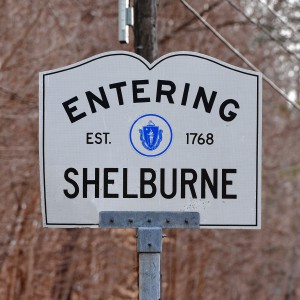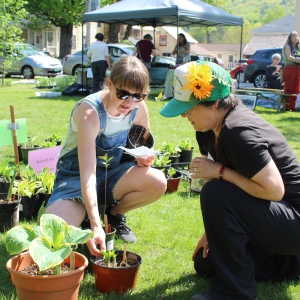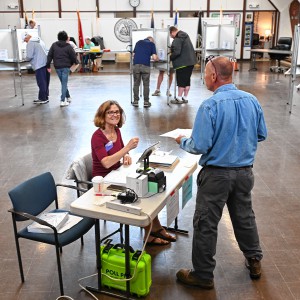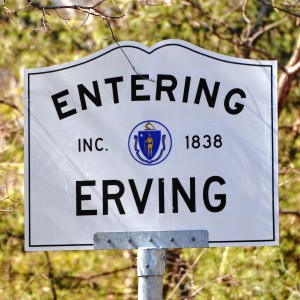Faith Matters: Cultivating deep reverence for the Earth
| Published: 05-12-2023 4:27 PM |
What do you see when you look at a rock? Perhaps it’s on the sidewalk, by the ocean or in a garden? Do you wonder how it got there? What is its story?
Maybe rocks are not your thing. But as late April’s Earth Day celebrations have now passed, I realize I was lucky to be reminded of the power and significance of rocks.
Last weekend, friends and I attended a presentation about geology by professor emeritus Richard D. Little of Greenfield Community College. Members of the Gill Historical Commission hosted the program at the town’s Elementary School and its gym/dining hall was packed. It was very heart-warming to see so many people there.
Perhaps you know about Richard Little already thanks to his activism about armored mud balls? He talked about these special rock formations in the presentation. I won’t forget being introduced to his work a dozen years ago when the Missions and Social Justice committee of my church in Ashfield invited him to give a talk as part of our ministry of climate justice.
In Gill last weekend, Professor Little gave a wonderful, two-part presentation, cracking jokes as he went along, whilst at the same time offering accessible perspectives on the deep geological history of Gill and its surroundings. Great Falls, Greenfield, Montague and other towns were also brought into the narrative. He shared specimen rocks as part of ‘show and tell’ and sold copies of his resource guide to Franklin County geological history, which folks bought and carried around with a smile – as if we had been given a key to the universe. We had.
Geology is one of those humbling disciplines that makes History (my own academic training) seem so recent, so small or insignificant. Professor Little talked about events well before the dinosaurs, millions and millions of years ago. It was an opportunity to remind oneself of the incredible riches of our earth, and of the events of deep time, when a volcano erupting or a river bed drying up might only be explained as the acts of a divine being. To a few especially curious people in the late 1700s, figuring out what the keys to earth’s history were became more important, either to prove that science was the only accurate and truthful guide to the universe or to suggest that only a divine presence could have created, and moved, such an incredible place as our Earth. Sometimes the two explanations were not mutually exclusive and this co-existence continues into the present.
In the late 18 th century, someone called James Hutton (1726-1797), in Scotland, developed the first reasoned explanation of earth’s origins as a science and showed how destruction and renewal were part of a continuous cycle. He proved then that the world was far older than the mere 6,000 years which was considered the truth. In 1795, he wrote a book called Theory of the Earth and in it illustrated “Unconformity at Jedburgh” (located in the Scottish borders) by showing immense intervals of time that separated layers of rock.
It is worth remembering that understanding the history of our world in these terms is quite recent.
Article continues after...
Yesterday's Most Read Articles
 Serious barn fire averted due to quick response in Shelburne
Serious barn fire averted due to quick response in Shelburne
 Bridge of Flowers in Shelburne Falls to open on plant sale day, May 11
Bridge of Flowers in Shelburne Falls to open on plant sale day, May 11
 Political newcomer defeats Shores Ness for Deerfield Selectboard seat
Political newcomer defeats Shores Ness for Deerfield Selectboard seat
 Roundup: Pioneer baseball wins Suburban League West title following 2-0 win over Hopkins
Roundup: Pioneer baseball wins Suburban League West title following 2-0 win over Hopkins
 As I See It: Between Israel and Palestine: Which side should we be on, and why?
As I See It: Between Israel and Palestine: Which side should we be on, and why?
 Employee pay, real estate top Erving Town Meeting warrant
Employee pay, real estate top Erving Town Meeting warrant
I was interested to read that Hutton had a friend called John Kay. He was a caricaturist who made a cartoon showing Hutton sizing up an imaginary slice of the earth that revealed rock ‘faces’ or profiles of individuals buried in the dirt. It is interesting to look at this cartoon when we know that there are countless indigenous people whose inheritance of the earth is fraught with violence and whose stories are still being told and retold in order to redress past grievances.
One ‘face’ looks like the Old Man of the Mountain, the outcrop of rocks in New Hampshire’s White Mountains that fell 20 years ago.
The caricature also suggests that the earth itself is embodied, alive with the stories and tales of people over countless millennia and endless generations.
Some may find this a fanciful explanation but I think it carries an important reminder of who belongs and who has had a more ‘right relationship’ with the earth. By caring for the earth, we can learn of these stories via whatever material cultures they manifest in – fossils, dinosaur footprints, arrowheads, glaciers, gemstones, skeletons, etc., and we can ensure that they are interpreted correctly by the descendants of people who made and found them. When we learn about geology we are able to care more about earth’s history and our own histories.
They in turn can inspire wonder and awe in ways that will help us protect the earth for generations to come. Religion matters. Earth matters.
Hetty Startup is on the leadership team of the Interfaith Council of Franklin County and a deacon at First Congregational Church of Ashfield/UCC.

 Speaking of Nature: Indulging in eye candy: Finally, after such a long wait, it’s beginning to look like spring is here
Speaking of Nature: Indulging in eye candy: Finally, after such a long wait, it’s beginning to look like spring is here Celebrating ‘Seasonings’: New book by veteran preacher and poet, Allen ‘Mick’ Comstock
Celebrating ‘Seasonings’: New book by veteran preacher and poet, Allen ‘Mick’ Comstock Faith Matters: How to still the muddy waters of overthinking: Clarity, peace and God can be found in the quiet spaces
Faith Matters: How to still the muddy waters of overthinking: Clarity, peace and God can be found in the quiet spaces A time for every purpose under heaven: Free sing-a-long Pete Seeger Fest returns to Ashfield, April 6
A time for every purpose under heaven: Free sing-a-long Pete Seeger Fest returns to Ashfield, April 6
